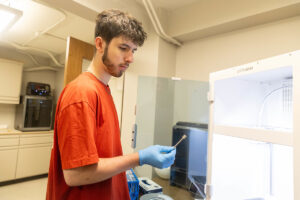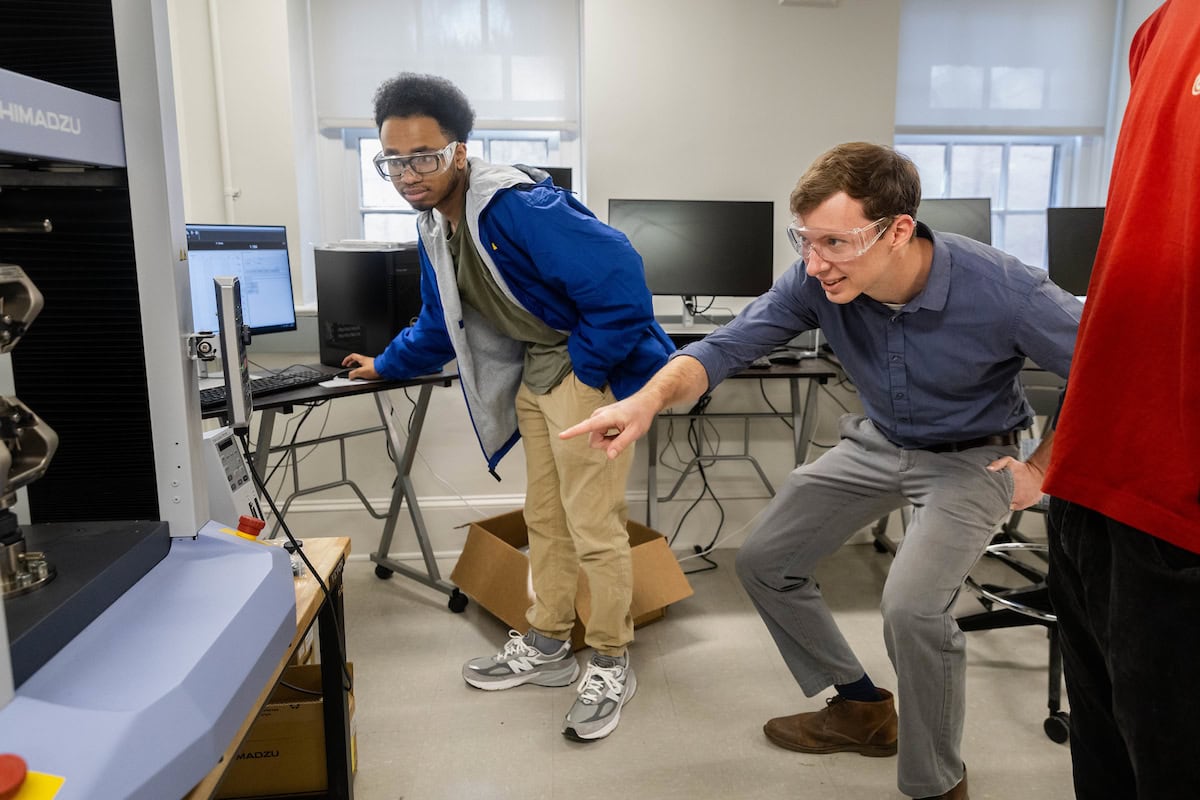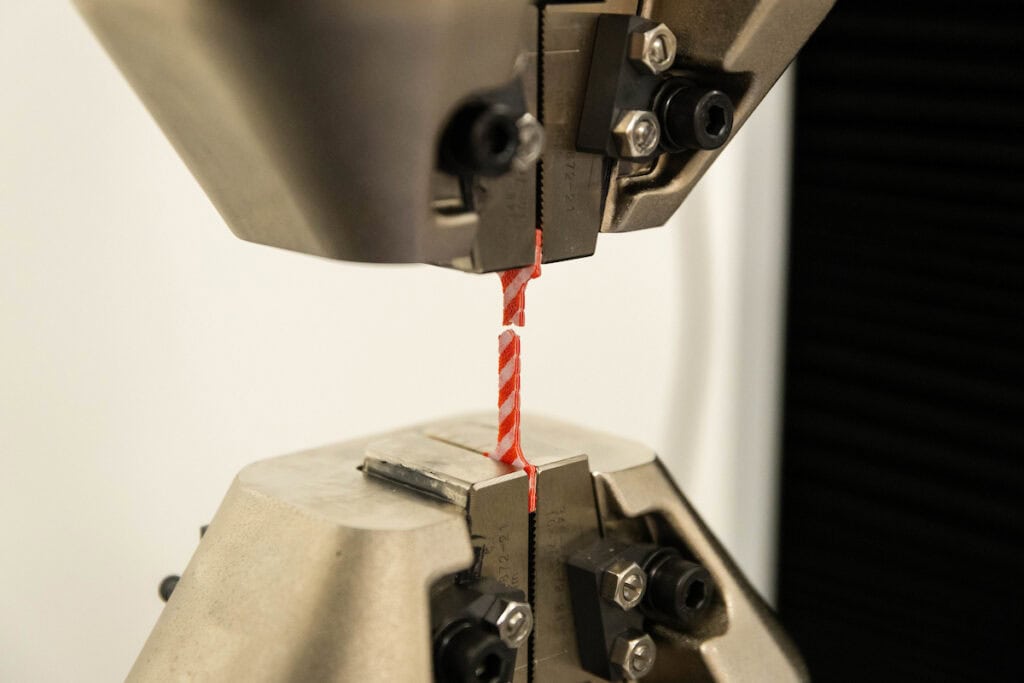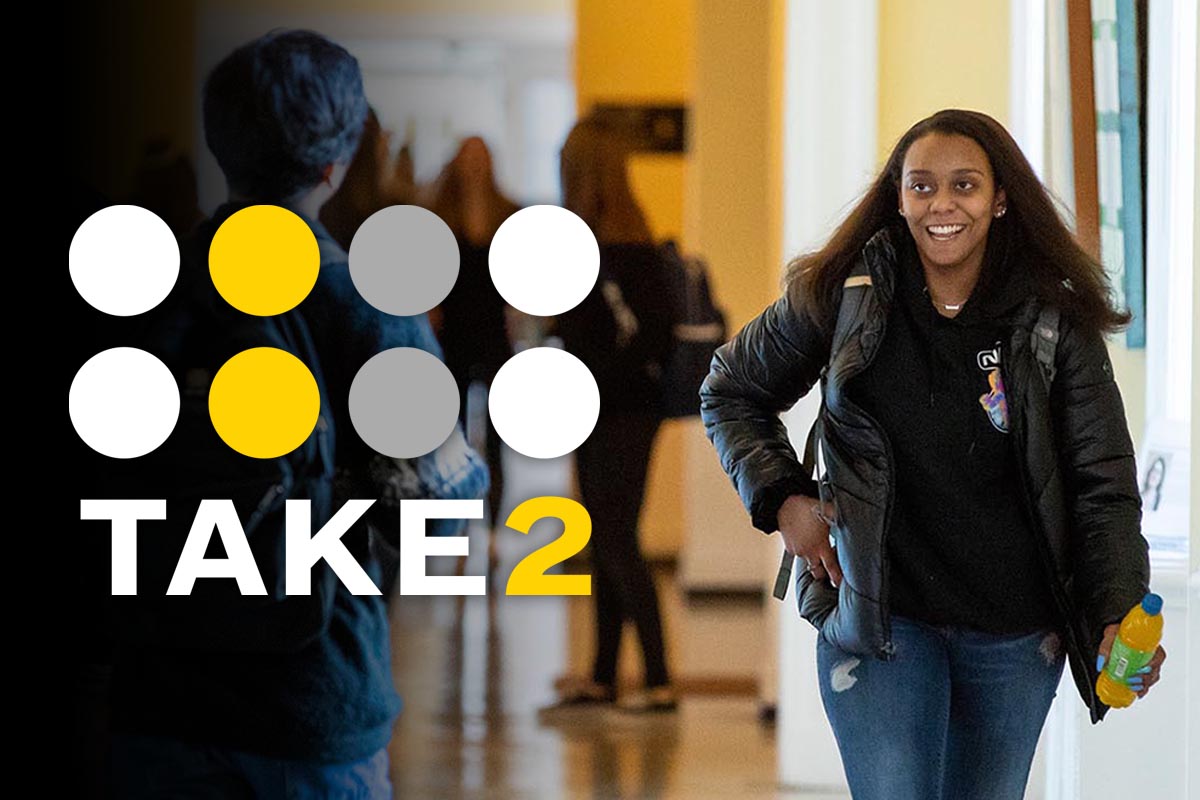Summer research exploring strength, flexibility in metal-based filaments
Randolph’s Summer Research Program is a competitive, paid program that pairs students with faculty members to conduct research in their areas of interest. This story is part of an ongoing series featuring their work on campus this summer.
 Jonathan Skelton, Andrew Hooks ’27, and Kyle Thompson ’28 are studying a method of 3D printing that uses metal-based filaments for their 2025 Summer Research Program project.
Jonathan Skelton, Andrew Hooks ’27, and Kyle Thompson ’28 are studying a method of 3D printing that uses metal-based filaments for their 2025 Summer Research Program project.
The method—Metal Fused Filament Fabrication, or MFFF—creates complex metal parts in a layer-by-layer fashion.
Their project focuses on two stainless steel alloys, 316L and PH 17-4, that are used regularly in aerospace, medical, and automotive industries—and what would happen if they were made into a composite material using MFFF.
“The process itself is pretty novel,” said Skelton, a professor of robotics and mechatronics engineering. “We’re taking this filament that is 90 percent metal powder and 10 percent binding polymer. We’re using the same process with the 3D printer as if you were printing plastic, but using a special filament.”
Eventually, they will combine the two alloys into various prototypes designed by Hooks and Thompson, who are both robotics and mechatronics engineering majors.
“It’s not really mixing the alloys together,” Skelton explained. “They will each individually still be the same alloy, but combined together in different ways. We’re going to try these different geometries and see how it changes the properties of the overall sample. That’s kind of the key to this.”
The 316L is ductile and can be stretched to about 30 percent of its original length before breaking, while the PH 17-4 breaks at about 10 percent, but is much stronger overall.
They will investigate if, together, the two alloys could create a composite material that offers a balance between strength, ductility, and corrosion resistance.
Thompson, who has experience modeling with CAD software, designed a prototype with an almost lattice-like pattern.
“I just thought it would be a fun, complex geometry to try and see if using both materials would impact how it reacts in a stress test,” he said.
Hooks, who is just starting to work with the software, went a bit simpler, with what he described as a sandwich structure, placing one alloy in the center with the other on the top and bottom.
He wants to learn more about 3D printing and CAD this summer.
“I’m here for the experience,” he said. “It’s going to be very helpful when I start looking for internships next year.”
For Skelton, it’s about helping students make the connections between materials science and engineering.
“You learn about stresses and strains in engineering, but then the materials science explains why the materials do the things they do, why you can stress some materials more than others,” he said. “That’s what I did my PhD in, materials science. I used a lot of the things I’m teaching in robotics and mechatronics in my degree.
“It’s nice to have that broader understanding,” he continued. “That’s what we’re trying to do with this program in general, offering an engineering degree in a liberal arts school. We’re focused on getting students a really wide basis of knowledge so they can think creatively and outside the box when they get a job.”
Tags: robotics and mechatronics engineering, srp 2025, summer research 2025


